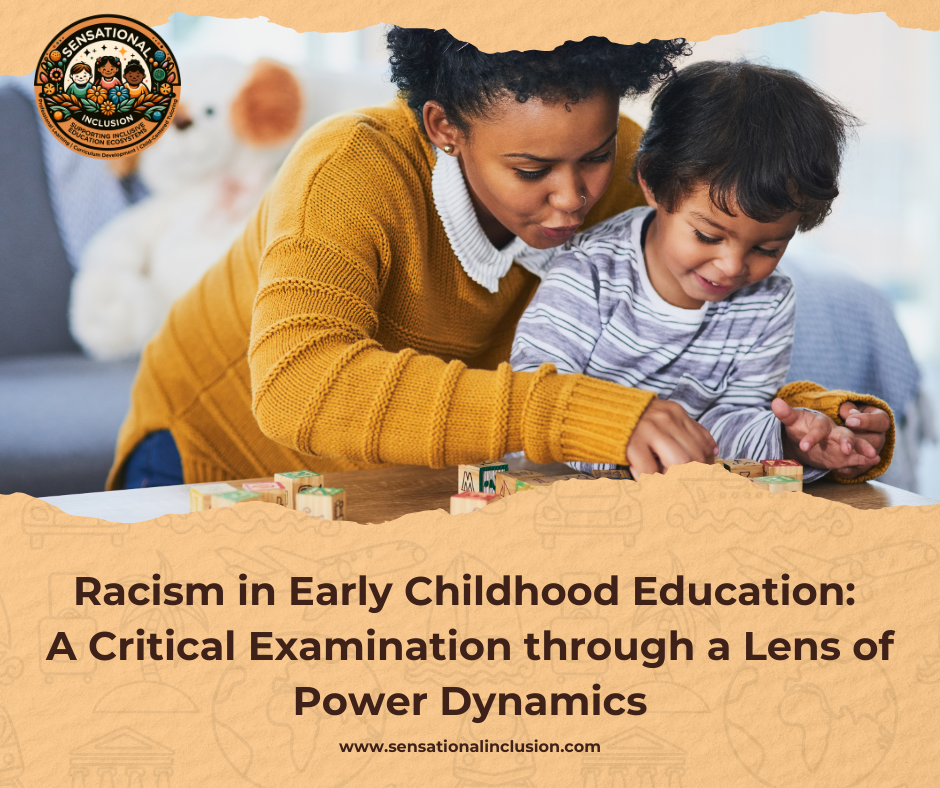In the realm of ostensibly equitable learning opportunities, early childhood education (ECE) claims a position of prominence, yet it grapples inadequately with the imperative of dismantling biased systems. The National Association for the Education of Young Children (NAEYC) places a seemingly noble emphasis on the professional obligation of educators to cultivate environments celebrating diversity and inclusion. However, this critical examination delves into the intricate layers of anti-racism in the classroom, challenging the conventional narratives, advocating for a radical mindset shift, and scrutinizing the potency of storytelling as both a tool and a potential perpetuator of power imbalances in educational settings.
Antiracist Teaching: A Nuanced Interplay of Power Dynamics
Antiracist teaching, as presented by Pitts (2020), is proffered as a manifestation of hope, a commitment to dismantling unfair systems, and an act of love. However, a closer inspection reveals a nuanced interplay of power dynamics. Educators embarking on antiracist work are tasked not only with examining the repercussions of racism on children, families, and fellow educators but also with wielding the authority to identify and address racial biases. This authority, however well-intentioned, brings forth questions of who holds the power to define and enforce the anti-racist agenda. The demand for a profound shift towards a child-centered, equity-driven, family-engaged, and community-focused teaching philosophy (Fraga, 2020) prompts an exploration of whose values and perspectives are deemed central in this ostensibly equitable framework.
Decentering Whiteness: Unraveling Structural Biases or Repositioning Power?
To engage in antiracist work, educators are urged to decenter whiteness from the educational narrative. The call to recognize that the dominance of white culture is neither neutral nor universal challenges the prevailing power structures. Critical white studies, the tool advocated for dismantling the assumption of whiteness as an objective norm, unravels systemic biases. Yet, it also prompts a scrutiny of whether decentering whiteness translates into a genuine redistribution of power or merely a repositioning of it. The very act of disruption can be a double-edged sword, potentially reinforcing the educator’s position as the arbitrator of acceptable cultural norms.
Decolonizing Thought: Whose Voices Take Center Stage?
Antiracist work extends beyond challenging whiteness; it ostensibly requires a conscious effort to decenter Western colonial thought. The call to reevaluate curricula, narratives, and educational practices brings forth the question of whose voices and perspectives are prioritized in this recalibration. While the endeavor claims to reflect a more global and diverse reality, the very act of decentering begs the question of who defines what constitutes a diverse reality and which narratives are allowed to permeate the educational discourse.
The Global Majority: Redefining Majority or Imposing a New Hegemony?
The recognition that Black people, along with individuals from diverse racial and ethnic backgrounds, constitute the global majority challenges the prevailing narrative that centers whiteness. Yet, this shift in perspective prompts an examination of whether it genuinely challenges power structures or inadvertently imposes a new hegemony. The importance of fostering an inclusive learning environment is underscored, but who defines and maintains the parameters of inclusivity becomes a critical question in the quest for genuine equity.
Courageous Conversations and Storytelling: Dialogues or Monologues?
Brave spaces, presented as crucial in the process of decentering whiteness, raise questions about the dynamics of dialogue within these spaces. While educators are encouraged to engage in open, honest discussions about race and challenge existing norms, the power dynamics inherent in these conversations necessitate a critical examination. Do these spaces foster genuine dialogue, or do they inadvertently become platforms for the imposition of certain perspectives, reinforcing power imbalances?
The Profound Impact of Storytelling: Amplifying Voices or Selective Narratives?
Storytelling, hailed as a transformative force, beckons an examination of whose narratives are elevated and whose remain marginalized. While stories from the periphery are claimed to carry profound insights, the power to decide which stories gain prominence rests in the hands of educators. The potential for storytelling to bridge the gap between theory and reality is marred by the risk of selective amplification, perpetuating certain narratives while silencing others.
Embracing Empathy Through Storytelling: A Genuine Connection or Performative Sympathy?
The call to embrace empathy through storytelling necessitates a discerning eye on the authenticity of this connection. As educators are urged not just to understand racism academically but to feel it on an emotional level, the question arises: is this empathy a genuine shared vulnerability or a performative display of sympathy? The power to evoke empathy lies in the hands of those who control the narrative, raising concerns about the potential for manipulation in the pursuit of a supposed connection.
Conclusion: Interrogating Power Dynamics in Anti-Racist Endeavors
The purported anti-racist journey in early childhood education demands a critical examination not only of the stated goals but of the power dynamics inherent in the strategies employed. As educators grapple with the uncomfortable truths about racism’s existence within ECE programs, it becomes imperative to question whether the prescribed solutions genuinely challenge power imbalances or inadvertently reinforce them. Through a lens of critical race theory, this exploration invites educators to scrutinize the intricacies of power dynamics in anti-racist endeavors, ensuring that the seeds sown for an antiracist future do not unwittingly cultivate a new landscape of oppression.

